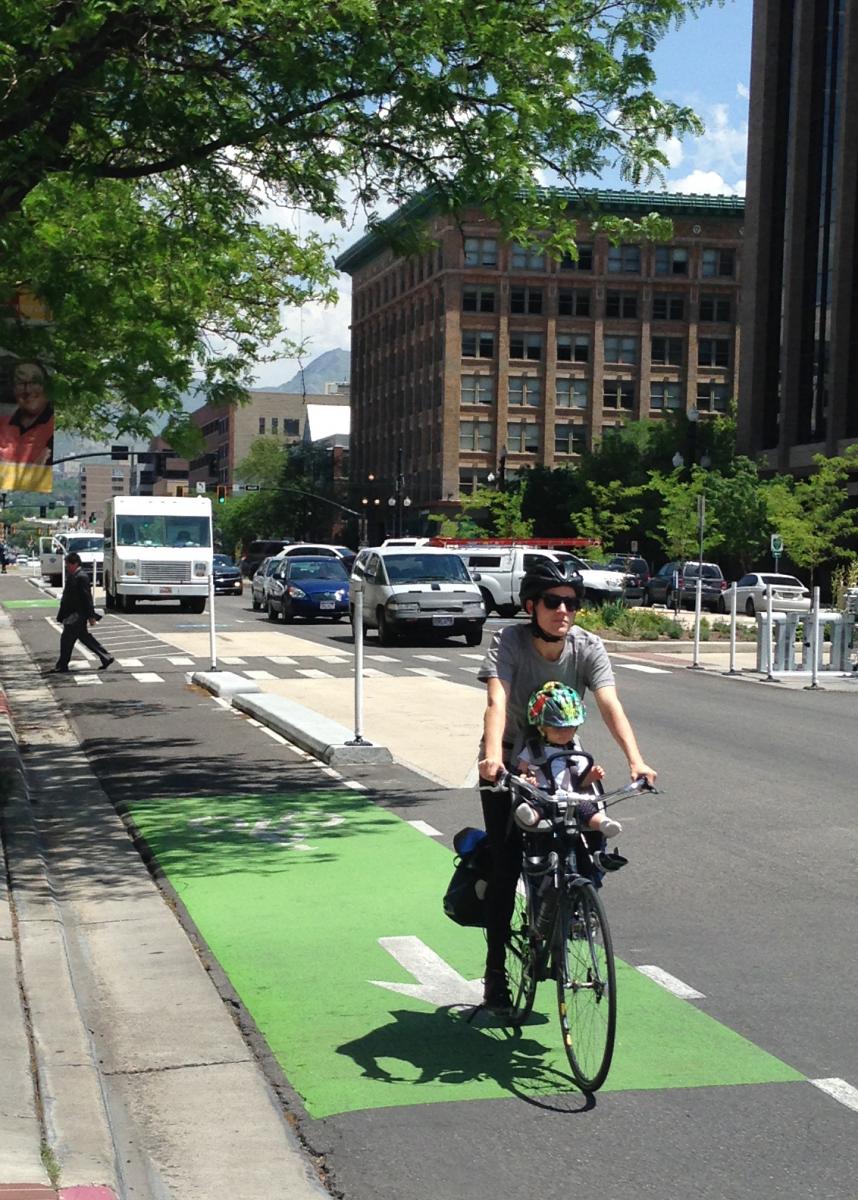DISCOVER YOUR LOCAL BICYCLING COMMUNITY
Find local advocacy groups, bike shops, instructors, clubs, classes and more!
BFC Spotlight: Salt Lake City
 Last week, we announced the latest round of Bicycle Friendly Communities. Salt Lake City, UT is one of the 42 new and renewing communities this round, and the Silver-level community has made a lot of strides since the last application period four years ago. We caught up with Becka Roolf, the ciyt’s bicycle and pedestrian coordinator, and Phil Sarnoff, the executive director of the Bike Utah, to talk about Salt Lake City’s improvements over the last few years.
Last week, we announced the latest round of Bicycle Friendly Communities. Salt Lake City, UT is one of the 42 new and renewing communities this round, and the Silver-level community has made a lot of strides since the last application period four years ago. We caught up with Becka Roolf, the ciyt’s bicycle and pedestrian coordinator, and Phil Sarnoff, the executive director of the Bike Utah, to talk about Salt Lake City’s improvements over the last few years.
What does this award mean to you and to Salt Lake City?
PS: This award is an affirmation that Salt Lake City is on the right track. The City’s Transportation Division has been working tirelessly to implement progressive infrastructure projects and new programs to get more people riding. There is still a long road ahead to create a city where all people feel comfortable riding, but the silver designation serves as an important benchmark and an opportunity to refocus efforts among the city staff and bicycle advocates.
BR: We are now solidly silver. The League’s new emphasis on specific benchmarks tied to specific award levels means that Salt Lake City can see how we measure up. In some categories, we are already at gold levels. In other areas, our numbers are strongly silver.
What was the city’s biggest accomplishment in the past year?
PS: The protected bicycle lane on 300 South is Salt Lake City’s biggest accomplishment. It took some serious political will to move forward with this project, but it is giving Salt Lake City residents an idea of what complete streets can be. With a second protected lane going in this summer, there will be increased opportunities for people of all abilities and comfort levels to ride.
BR: In addition to the 300 South project that Phil mentioned, we completed an update of our Pedestrian and Bicycle Master Plan, now pending City Council approval. This document lays out a citywide vision for a connected and integrated network for both bicyclists and pedestrians. We’re particularly excited about how neighborhood byways can tap our quiet streets in our robust grid network, to combine with urban trails and a few strategic separated bike lanes downtown, resulting in a low-stress bikeway network that serves the entire city.
What’s on the to-do list for the next year?
PS: We are working with Salt Lake City’s Transportation Division to pilot test a school-based bicycle education curriculum. The hope is to get more youth on bicycles and, subsequently, entire families. The other big Salt Lake City project is the installation of the first protected intersection in the country this summer. Collectively, we are also working to increase bicycle mode share.
BR: Our first neighborhood byway will be constructed this year on 600 East, along with a second protected bike lane downtown. The skeleton of our low-stress bikeway network will be realized in the next year, along with a city-wide wayfinding network to help bicyclists understand how to tap the new network. We’re also looking forward to initiating a new school-based bike education in partnership with Bike Utah, and continuing our expanded education and outreach with programs such as light giveaways, commuter pit stops, and booths at summer festivals.

There are many mid-sized cities working on becoming more bicycle-friendly, and many have BFC awards. How does competition factor into your efforts? How do you view Salt Lake City in comparison to similarly sized cities in the region and beyond in terms of bike-friendliness?
PS: The Bicycle Friendly Community program, first and foremost, provides an opportunity to learn from experts outside of the communities that are applying. It is extremely valuable to have this feedback so communities can learn from the experiences of others across the country. In comparing to other cities across the country, Salt Lake City and the other BFCs in Utah can hold their own. There is great momentum in Salt Lake and across the state to create communities where people have a full range of transportation choices.
BR: Salt Lake City is the “little city that could,” in that we are nipping at the heels of much larger cities for bicycle friendliness. I think this is evidenced in the fact that our public, our officials, and our city staff all look to cities like Austin, Portland, Seattle, Chicago, Minneapolis, Tucson – cities that are much larger than we are when measured by population alone. Other mid-sized cities in the region tend to have a stronger college town feel, or have close proximity to one of the larger cities. Our small city population (190,000) is flavored by our large commuter population and our status as Utah’s capital city and the center of our metropolitan area. We often hear from visiting bicyclists that they are surprised to find out how bike-friendly Salt Lake is. It really is a great place to ride, and one of the great American cities, tucked into a small gem of the intermountain West.
Photos courtesy of Salt Lake City